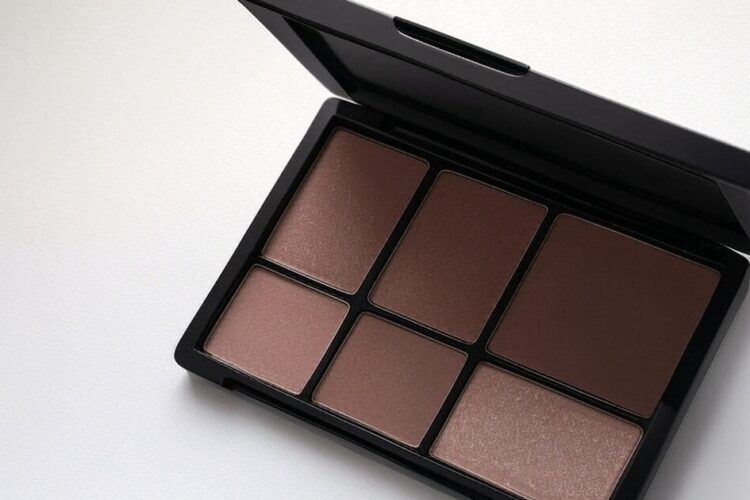Toxic makeup contains harmful ingredients like parabens, phthalates, formaldehyde, lead, and PFAS, which can cause skin irritation, allergic reactions, endocrine disruption, and even cancer. The FDA’s lax regulations allow these chemicals in cosmetics, unlike stricter EU standards. Consumers face risks from bioaccumulation and environmental damage from microplastics and siloxanes. Clean beauty offers safer, non-toxic alternatives, with brands like Ilia prioritizing organic, cruelty-free products. Check labels, use EWG’s Skin Deep database, and choose certified vegan or hypoallergenic makeup to avoid greenwashing. Stronger regulations and green chemistry are shaping a safer future for cosmetics. Make informed choices to protect your health and the planet.
Long Version
The beauty industry thrives on promises of radiant skin, bold colors, and flawless finishes, but beneath the allure of makeup lies a troubling reality: toxic makeup can pose serious health risks. From harmful cosmetics containing carcinogens to products laden with endocrine disruptors, the ingredients in your makeup bag may be doing more harm than good. This article dives deep into the world of dangerous beauty products, exploring their risks, regulations, and the rise of clean beauty. Whether you’re a makeup enthusiast or a concerned consumer, this guide is your authoritative resource for understanding toxic makeup and choosing safer alternatives.
The Scope of Toxic Makeup: What’s in Your Cosmetics?
Every day, millions apply makeup ingredients like foundation, lipstick, and mascara without questioning their safety. Yet, many cosmetics contain chemicals that can cause skin irritation, allergic reactions, or even long-term health issues. The FDA regulations in the United States, while overseeing cosmetic safety, allow manufacturers significant leeway, meaning harmful ingredients often slip through the cracks. In contrast, the European Union bans over 1,300 chemicals from cosmetics, while the U.S. bans fewer than 30. This regulatory gap has fueled concerns about toxic makeup and sparked a movement toward non-toxic makeup.
Common Toxic Ingredients in Makeup
Let’s break down the most prevalent harmful ingredients found in cosmetics and their associated risks:
- Parabens: Used as preservatives, parabens (e.g., methylparaben, propylparaben) are linked to endocrine disruption and may mimic estrogen, potentially increasing the risk of breast cancer. Studies suggest they can penetrate the skin and accumulate in the body, contributing to bioaccumulation.
- Phthalates: Found in nail polishes and fragrances, phthalates are associated with reproductive toxicity and developmental issues. They’re often hidden under vague terms like “fragrance” or “parfum.”
- Formaldehyde and Formaldehyde-Releasing Preservatives: Present in some mascaras and eyeliners, formaldehyde is a known carcinogen that can cause contact dermatitis and respiratory irritation.
- Lead in Cosmetics: Trace amounts of lead have been found in lipsticks, posing risks of neurological damage, especially in children and pregnant women. The FDA sets no enforceable limit for lead in cosmetics.
- Mercury in Makeup: Used in some skin-lightening creams, mercury is a neurotoxin that can cause kidney damage and skin discoloration.
- Talc Contamination: Talc, a common ingredient in powders and eyeshadows, may be contaminated with asbestos, a carcinogen linked to mesothelioma. Rigorous testing is critical to ensure talc safety.
- PFAS (Per- and Polyfluoroalkyl Substances): Known as “forever chemicals,” PFAS in waterproof mascaras and long-wear foundations persist in the environment and body, potentially causing immune system dysfunction and cancer.
- Microplastics: Found in glitter and some foundations, microplastics contribute to environmental pollution and may penetrate the skin microbiome, disrupting skin health.
- Synthetic Fragrances: Often containing undisclosed chemicals, synthetic fragrances can trigger allergic reactions and respiratory issues.
- Coal Tar Dyes: Used in hair dyes and colored cosmetics, these dyes may contain heavy metals and are linked to cancer.
- BHA and BHT: These preservatives are potential endocrine disruptors and may cause skin irritation or organ toxicity.
- Siloxanes: Found in primers and foundations, siloxanes (e.g., cyclomethicone) may interfere with hormone function and persist in the environment.
- Triclosan: An antimicrobial agent in some cosmetics, triclosan disrupts thyroid function and contributes to antibiotic resistance.
- Toluene: Present in nail polishes, toluene is a neurotoxin linked to headaches, dizziness, and reproductive harm.
- SLS (Sodium Lauryl Sulfate) and SLES (Sodium Laureth Sulfate): These foaming agents can cause skin irritation and may be contaminated with carcinogens like 1,4-dioxane.
- Propylene Glycol and Mineral Oil: These humectants and occlusives can clog pores and cause contact dermatitis, especially in sensitive skin.
These ingredients, often lurking in everyday products, highlight the need for consumer vigilance. The Environmental Working Group (EWG) rates cosmetics for safety, and their EWG Verified seal is a trusted marker of non-toxic makeup.
Health Risks of Toxic Makeup
The health risks of toxic makeup extend beyond skin irritation. Repeated exposure to harmful cosmetics can lead to:
- Allergic Reactions and Contact Dermatitis: Ingredients like synthetic fragrances and parabens can cause redness, itching, and rashes, particularly in those with sensitive skin.
- Endocrine Disruption: Chemicals like phthalates, BHA, and BHT interfere with hormone function, potentially affecting fertility, metabolism, and development.
- Carcinogenic Effects: Formaldehyde, coal tar dyes, and asbestos-contaminated talc are linked to cancer, raising concerns about long-term use.
- Neurological and Developmental Harm: Lead, mercury, and toluene can impair cognitive function and pose risks to fetuses and young children.
- Skin Microbiome Disruption: Ingredients like microplastics and triclosan may alter the skin’s natural bacterial balance, leading to acne or infections.
- Bioaccumulation: Chemicals like PFAS and parabens build up in the body over time, potentially causing chronic health issues.
These risks are particularly concerning for frequent makeup users, pregnant women, and adolescents, whose developing systems are more vulnerable. Hypoallergenic products may reduce some risks, but they’re not always free of toxic ingredients.
Regulatory Standards and Gaps
Cosmetic safety is governed by regulatory standards, but these vary widely. In the U.S., the FDA oversees cosmetics under the Federal Food, Drug, and Cosmetic Act but lacks the authority to require pre-market safety testing. Manufacturers self-regulate, often leading to greenwashing, where products are marketed as “natural” or “safe” despite containing harmful ingredients. For example, terms like “organic” or “natural cosmetics” are not strictly regulated, misleading consumers.
In contrast, the EU’s Cosmetics Regulation bans thousands of chemicals and requires rigorous safety assessments. Canada and other countries also enforce stricter rules than the U.S. The EWG and advocacy groups push for stronger FDA regulations, but progress is slow. Recent laws, like the Modernization of Cosmetics Regulation Act (MoCRA) of 2022, aim to improve cosmetic safety by mandating adverse event reporting and facility registration, but they don’t address all concerns.
The Rise of Clean Beauty
Amid growing awareness of toxic makeup, the clean beauty movement has gained traction. Non-toxic makeup, organic makeup, and vegan cosmetics prioritize safer ingredients and transparency. Brands like Ilia, RMS Beauty, and Burt’s Bees emphasize cruelty-free makeup and avoid harmful chemicals. Certifications like EWG Verified, USDA Organic, and Leaping Bunny guide consumers toward trustworthy products.
However, clean beauty isn’t without challenges. Greenwashing remains rampant, and “natural” doesn’t always mean safe—some natural ingredients can still cause allergic reactions. Consumers must scrutinize ingredient lists and research brands to ensure authenticity.
Tips for Choosing Safe Cosmetics
To navigate the world of toxic makeup and embrace clean beauty, follow these steps:
- Read Labels Carefully: Avoid products with parabens, phthalates, formaldehyde, PFAS, and other red-flag ingredients. Look for hypoallergenic or EWG Verified options.
- Research Brands: Choose companies committed to transparency and cruelty-free makeup. Check their websites for ingredient policies.
- Use Apps and Databases: Tools like the EWG’s Skin Deep Database or Think Dirty app rate products for safety.
- Prioritize Certifications: Seek USDA Organic, EWG Verified, or Leaping Bunny certifications for assurance.
- Patch Test New Products: Test products on a small skin area to check for allergic reactions or contact dermatitis.
- Simplify Your Routine: Reduce exposure to harmful chemicals by using fewer products or opting for multi-use items.
- Support Advocacy: Back organizations pushing for stronger FDA regulations to ensure cosmetic safety.
Environmental and Ethical Concerns
Toxic makeup doesn’t just harm users—it impacts the environment. Microplastics and PFAS pollute waterways, harming wildlife and ecosystems. Siloxanes and phthalates persist in soil and water, contributing to bioaccumulation in animals. Ethical concerns also arise, as some brands test on animals or use unsustainable sourcing practices. Choosing vegan cosmetics and cruelty-free makeup supports both human and environmental health.
The Future of Cosmetic Safety
The fight against toxic makeup is gaining momentum. Consumer demand for clean beauty is driving innovation, with brands developing safer, sustainable alternatives. Advances in green chemistry are creating non-toxic preservatives and pigments, while advocacy for stricter regulatory standards continues. As awareness grows, the industry is shifting toward transparency and accountability.
Conclusion: Empowering Informed Choices
Toxic makeup poses real risks, from skin irritation to carcinogenic effects, but consumers have the power to make safer choices. By understanding harmful ingredients, supporting clean beauty, and demanding stronger FDA regulations, you can protect your health and the environment. Whether you’re drawn to organic makeup, vegan cosmetics, or hypoallergenic options, prioritizing cosmetic safety ensures beauty doesn’t come at a cost. Stay informed, read labels, and choose products that align with your values—for your skin, your health, and the planet.
Hashtags For Social Media
#ToxicMakeup #CleanBeauty #NonToxicMakeup #SafeCosmetics #HarmfulIngredients #GreenBeauty #OrganicMakeup #VeganCosmetics #CrueltyFreeMakeup #MakeupSafety #ParabenFree #PhthalateFree #NoToxicChemicals #EcoFriendlyBeauty #NaturalMakeup #EWGVerified #HypoallergenicMakeup #SustainableBeauty #CosmeticSafety #BeautyWithoutHarm #MicroplasticFree #PFASFree #HealthySkinCare #MakeupIngredients #CleanBeautyMovement #ToxicFreeLiving #ConsciousBeauty #BeautyHealth #GreenwashingAwareness #SafeBeautyChoices
Related Questions, Words, Phrases
what is toxic makeup | are cosmetics harmful | dangerous makeup ingredients | harmful chemicals in makeup | is my makeup safe | toxic ingredients in cosmetics | health risks of makeup | what are parabens in makeup | phthalates in cosmetics | formaldehyde in makeup dangers | lead in lipstick risks | pfas in makeup | microplastics in cosmetics | safe makeup brands | clean beauty explained | non-toxic makeup options | organic makeup benefits | vegan cosmetics safety | cruelty-free makeup brands | skin irritation from makeup | allergic reactions to cosmetics | endocrine disruptors in makeup | carcinogens in beauty products | greenwashing in cosmetics | fda regulations for makeup | cosmetic safety standards | how to avoid toxic makeup | checking makeup ingredient safety | ewg skin deep database | hypoallergenic makeup benefits | bioaccumulation from cosmetics | environmental impact of makeup | talc contamination in cosmetics | choosing safe cosmetics | why is clean beauty important






